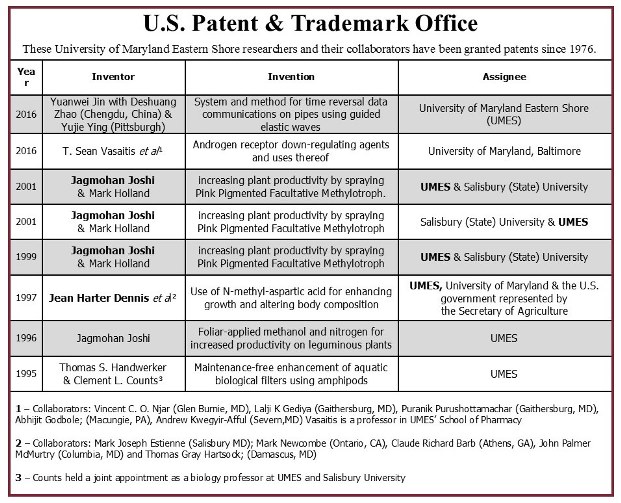Sunday, October 9, 2016
Researcher earns UMES its first exclusive patent in 20 years

PRINCESS ANNE, MD – (Oct. 9, 2016) – Dr. Yuanwei Jin has come up with an invention that could head off energy pipeline ruptures like the one that caused gasoline prices to spike in September, and he’s been issued a patent for his unique idea.
The chairman of UMES’ engineering and aviation sciences department received word just before the fall semester started that his “smart structure” sensing device passed a lengthy and intense legal and engineering vetting process.
That makes Jin, a native of China, the first faculty member in two decades to be the primary recipient of a U.S. Patent assigned exclusively to the University of Maryland Eastern Shore.
“As a scientist, I am excited by the work that Dr. Jin has done to advance the frontiers of science and technology,” Dr. Juliette B. Bell said. “As President of the University of Maryland Eastern Shore, I am elated that we have among our talented faculty, someone of Dr. Jin’s caliber who is using his knowledge to develop innovations that could change the world.”
Jin shares credit with a former visiting scholar at UMES and a graduate research assistant at Carnegie Mellon University, but Patent No. 9,413,571 is a groundbreaking accomplishment for UMES.
“Dr. Jin is a distinguished scholar who has brought honor and integrity not only to himself but to this university,” said Dr. Ayodele Alade, dean of UMES’ School of Business and Technology. “Our students are very lucky to have someone of his stature in their midst.”
Alade recruited Jin from Carnegie Mellon in Pittsburgh to join the UMES faculty, where since 2008 he has steadily risen through the ranks to be the university’s lead engineering professor. His specialty is electrical engineering with a focus on signal and image processing.
Jin’s work in the field earned him two previous patents for research he started prior to becoming a UMES professor.
His latest vision – “embedded piezoelectric sensors” – could be used in the next generation of petroleum and natural gas pipelines as well as materials in aircraft and space crafts. He also envisions applications in the construction of wind turbines, especially those placed offshore.
The patent document summarizes Jin’s invention as a “system and method for time reversal data communications on pipes using guided elastic waves.”
Asked to translate his highly technical work, Jin simply says: “I can make metals communicate.”
For example, if a network of Jin’s sensors can be incorporated into the manufacture of pipelines, data they generate could alert owners about evidence of corrosion or stress fractures that in turn could avert a malfunction. A rupture in an isolated rural area caused by a natural disaster could be pinpointed more quickly, possibly helping limit environmental damage.
It is too early to say when Jin’s invention might find its way into the marketplace, or how he and the university could benefit.
“There are a lot more conversations we will need to have,” Alade said.
Jin filed preliminary paperwork with the U.S. Patent and Trademark Office in March 2012 that he believed he had a one-of-kind idea. He described the subsequent back-and-forth communications in the ensuing four years as intense and time consuming.
Jin says pursuing theories and making discoveries on new frontiers of engineering science motivates him, not the potential for financial benefit that might be derived from his ideas.
“I’m giving students all I can,” Jin said. “Hopefully what I have done is helping with the reputation and the quality of our university.”
“I want to invest my career in this institution,” he said.

UMES Office of Public Relations, (410) 651-6669

